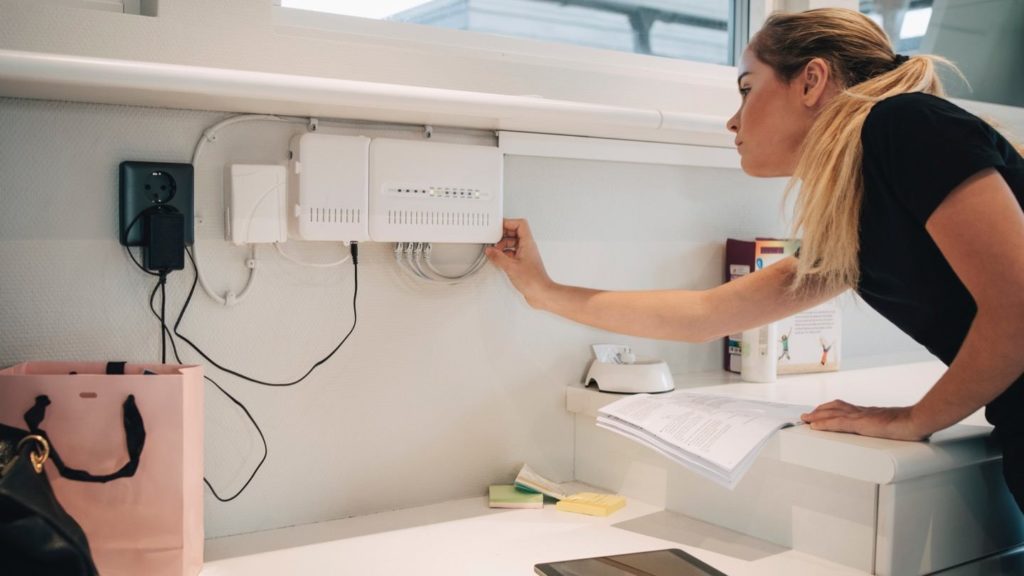If you are finding something related to boost WiFi signal strength then you are at right, we are having some precious points which really helps you in improving wifi signal strength. In April, 2013 Strategic Analytics released a report saying one quarter of all Internet connected households in the world connect to the Internet via home wireless networks. This market research and consulting firm predicts the trend will continue to grow significantly
How To Boost Your WiFi Signal Strength

If you’re one of the millions of homeowners taking advantage of wireless technology, you know it’s convenient, but you’re also probably aware that a weak or fickle connection can be frustrating. If you’re the victim of a poorly performing wireless internet signal, there’s no need to continue suffering.
Following are the eight tips which explains you about how to boost your WiFi Signal Strength
1. The Power of N
Wireless-G (802.11g) is the most common network, but it is no longer the fastest. Wireless-N is the way to go. A wireless-N (802.11n) network is twice as fast as wireless-G, and offers improved signal range and stability. Routers that support wireless-N cost more than wireless-G routers, but most speed-seekers would agree it’s a worthwhile investment. If you’re using an aged laptop, it likely contains a wireless-G card. You will need to purchase a wireless-N card to take advantage of wireless-N speeds.
2. Avoid Interference
If you aren’t ready to invest in upgraded hardware, consider moving the router to improve performance. Walls and metal objects will wreak havoc with the router’s signal distance and strength, so be sure your router’s signal is unobstructed. Position the router as high as possible, like in an attic, for optimal signal performance.
3. Upgrade the Router’s Antennas
Upgrading the router’s antenna is a simple way to increase the power of your router. The antennas that come standard on the router are omnidirectional, meaning the wireless signal is broadcast in all directions. An upgrade to a high-gain antenna allows you to focus the wireless signal in one direction. You won’t increase signal strength, but you’ll make the best use of it.
A high-gain antenna is ideal for those that work at home, from a specific location at all times. However it isn’t the best option for families who need wireless access throughout the home.
Must Read :- How to install ubuntu on android device
4. Bring on the Brew
If you’re not interested in purchasing a high-gain antenna, you can use the signal strength of your router’s omnidirectional antenna more efficiently with the help of an empty beer can. The beer can is cut open, and the metal is used like a dish to focus the omnidirectional signal toward the spot of your choice. Just like the high-gain antenna, you’ll lose signal coverage, but signal strength will get a bit of a boost.
5. Schedule a Router Reboot
If rebooting your router is a task to take on regularly, consider scheduling a daily automatic router reboot. A reboot “cleans up” your router and keeps it working at its potential. Use a simple outlet timer to schedule the reboot for a time you aren’t usually using the Internet.
6. Reap the Benefits of a Repeater
A wireless repeater, also referred to as wireless extender, can increase wireless signal distance and strength. A repeater captures the wireless signal and then rebroadcasts it, making it possible to receive a wireless signal in places that have long been wireless dead-spots. A repeater can be placed anywhere it can be plugged into an outlet and catch a wireless signal.
7. Update the Firmware
Firmware is embedded software that’s installed inside a router by the manufacturer. Firmware is designed to be upgraded as improvements become available and doing so often improves router performance and security. Updates are free, and can be found on the router manufacturer’s website.
8. Buy a Dual Band Router
If you’re using an older router, it’s probably working off 2.4Ghz frequency. The trouble is, so are other household devices such as the garage door opener, baby monitor, microwave and cordless phone- resulting in interference.
A dual band router broadcasts on two bands; 2.4Ghz and 5Ghz. The 5Ghz band is preferred over the 2.4Ghz band because it has less interference. The majority of wireless-N routers are dual band.
You should know that running your router in 5Ghz mode may reduce signal range because it is n’t as good at penetrating walls as 2.4Ghz.







Leave a Comment
You must be logged in to post a comment.